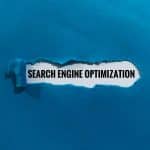Art has been a source of human expression since time immemorial. From the intricate cave paintings of our ancestors to the raw and evocative graffiti of the contemporary urban landscape, art has always reflected the essence of the human experience. But what happens when the artist isn’t human? In recent times, with the advent of artificial intelligence (AI), we’ve seen an explosion of generated art. These works, created by machines using machine learning and generative algorithms, have raised new ethical questions and legal challenges. The ethical implications of AI-generated art and the quandary of copyright law for these non-human creations will be our focus in this article.
Generating Art with AI: The Process and Ethical Implications
AI has undoubtedly revolutionized the creative process in art. With art generators using machine learning, an AI is trained with a training data set of thousands of images. The AI observes these images, learns from them, and eventually creates new, original generated images. Despite not being created by a human hand, these images show a remarkable level of authenticity and originality.
A lire également : How are biometric tattoos transforming security access?
However, the emergence of AI as an artist raises pertinent ethical questions. How do we assign credit for these works? Is it ethical to consider these AI-generated works as ‘art’ in the traditional sense? After all, the AI doesn’t have a personal experience or emotions to express, which most human artists draw upon to create their works.
Moreover, if you train your AI with copyrighted images, are you infringing on the rights of those artists? What about the legal and ethical implications of using images from high-profile sources such as Getty Images? These are not trivial considerations. In fact, they touch the very root of our understanding of art and its creation.
En parallèle : Using AI to detect and prevent forest wildfires
Navigating the Quandary of Copyright Law
Copyright law has long been a bulwark of protection for artists, safeguarding their intellectual property rights and ensuring they receive credit and remuneration for their work. However, the entrance of AI-generated art into the scene presents a unique quandary for copyright law. Current copyright laws in most jurisdictions, including the United States, were written with human artists in mind. According to the U.S. Copyright Office, for a work to be eligible for copyright protection, it must be created by a human being.
So where does this leave AI-generated art? Is it unprotected? Can it be exploited without offering any credit or compensation to the creators of the AI or the providers of the training data? These questions have led to vigorous debates among legal experts, AI developers, and artists alike.
Seeking Legal and Ethical Harmony
The intersection of AI and art has brought about a significant shift in the legal and ethical landscape of art. To address this, we need to rethink our traditional notions of copyright law and intellectual property rights. Some experts propose recognizing AI as a non-human legal entity, capable of holding copyright. Yet, this idea again raises ethical questions about the nature and purpose of copyright protection.
Another approach is to consider the person or organization that created and trained the AI as the rightful owner of the copyright. This approach awards human ingenuity and effort but may not fully consider the rights of those who provided the training data. Legal tools like licenses and contracts can help ensure that the rights of all parties involved are respected.
Concluding Thoughts: Navigating the Future of AI-Generated Art
The rise of AI-generated art is both exciting and challenging. It pushes the boundaries of creativity and brings innovative dimensions to the art world. Yet, it also ushers in a complex web of ethical and legal implications that we must navigate.
While there are no easy answers or one-size-fits-all solutions, it’s clear that we need thoughtful dialogue and legal reforms to address these issues. As more AI-generated works continue to emerge, we need to balance the need for innovation with respect for artistic integrity and copyright protection. Only then can we create a stable diffusion of AI in the art world that respects both the beauty of creativity and the rule of law. As we engage with this bold new frontier of art, we must remain committed to fostering an environment that champions both human and artificial artists alike.






